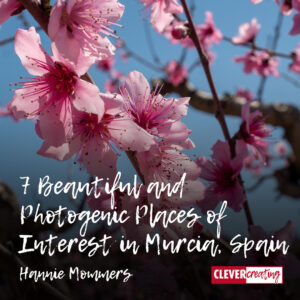
On a first superficial look at the province of Murcia in Spain, you might judge this as a place of little significance. Some parts are even ugly and I sure have mixed feelings about the area where I live.
If you are able to see the beauty in ugly things, there are a lot of places of interest in Murcia. If I look with my photographic eye, I see the beauty of the blossoms and (almost) forget about the poison that is sprayed on them.
No way to forget the ugliness of the chemical industry in the neighbourhood of Cartagena but still I can enjoy the lines and colours of the machinery.
The mountains of Murcia hide the presence of great biodiversity, while the Mar Menor inland sea is the most polluted water in the area.
So yes, I am critical of this province and certainly of its inhabitants, but I appreciate the landscapes and especially the wonderful sun, which shines here 300 days a year. The coast is called Costa Cálida for a reason!
Some of the links are affiliate links. As an affiliate associate, I earn a small commission when you purchase any of the products offered through the shared links at no extra cost to you. This helps me to maintain this website and I thank you for supporting me.
Table of Contents
The initiatives of tourist agencies
When we stayed in Puerto de Mazarrón for several months, we discovered the guided walks the tourist agency organized. It was a marvellous way to discover the area, to see places of interest, and to hear about its history.
Ever since we have made it a habit to visit the tourist agency first when we want to discover a place. Not every tourist agency has guided walks – I guess that also depends on the enthusiasm of the people working there – but we always have great conversations with them and learn a lot that way.
Most of the places of interest I describe here are places that don’t belong to the common hot spots of Murcia. Yet, I liked it enough to take loads of pictures of them.
Related: 7 Terrific Tourist Attractions in Cartagena, Spain
Cieza, the village of the blossoms
Check the town’s website and they’ll be bragging about the cherry blossoms. But if you look at the English Wikipedia page, only the prehistoric sites are listed.
Somehow I understand that. The blossoms are only there for a month, while the excavations can be visited all year round. Next time we are in Cieza we will.
This time we had come for the blossoms. In one word: magnificent! The fruit trees produce cherries, apricots, peaches, and nectarines, all of which bloom at approximately the same time.
We live in an almond area, those trees bloom a month earlier.
The best time to see the Cieza blossom is between mid-February and mid-March. Info and map at the tourist office.
Aledo and the Estrecho de la Arboleja
We were in the Enchanted City in Cuenca in 2019. The Estrecho de la Arboleja in the neighbourhood of Aledo is a little similar to that. Although on a much smaller scale.
It is a gorge of about 500 meters that resembles a tunnel. The rocks and mosses have special colours, which make the place extra interesting.
There is a 2 km circular walk from the car park, where whole families have a barbecue in summer and spend a quiet Sunday. LOL, as far as Spaniards can be quiet. The route is fairly easy, but there is some height difference and the bottom can be slippery.
Related: A Magnificent Museum and the Enchanted City of Cuenca, Spain
Aledo
Aledo played a role in the Reconquista, a period of nearly 800 years in which the Christians tried to reclaim the Iberian Peninsula from the Moors.
The village is built on a protruding rock and has a deep gorge on 3 sides. That gave the inhabitants a distant view and the village was easy to defend. But it was just as easy to lay siege, which could starve the population because nothing more was transported to the village.
Miquel Bulnes has written a fascinating novel about that time, Reconquista, which features a mix of historical and imaginary figures. I read it when I just settled down in this region and was delighted to read about Aledo.
Info and map of both Aledo and the Estrecho de la Arboleja at the tourist office, which is located in the castle tower at the end of the village.
Sierra Espuña and its Pozos de Hielo
The first time we drove through the Sierra Espuña, on a very cold January day, I sighed that I would never want to live in this area. That’s how ugly I thought the nature park looked.
The Sierra Espuña is an area you need to learn to appreciate and if you don’t like pine trees then you need to put in more effort. We don’t like pine trees, so it’s funny, that we found our dream house at the foot of this park.
In the meantime, I have discovered the beautiful places. The visitor centre, which has a small interactive exhibition that our grandchildren truly appreciate, the butterfly area and the Pozos de Hielo, to name a few.
The Pozos de Hielo were ice stores. These stone silos were built 4 centuries ago. Snow was shovelled into these – partly underground – silos. In the spring, blocks were chopped from the stock now compressed to ice and transported with donkeys to Murcia, Cartagena, and surrounding places.
Info and map of nature park Sierra Espuña are available in the tourist office of Totana and Alhama de Murcia and in the Visitor Centre in the middle of the park. There are many paths for hiking and routes for mountain bikes.
La Bastida de Totana
An area with an interesting archaeological excavation is La Bastida, a town inhabited between about 2200 and 1550 BC, in the Bronze Age.
In those days, human habitation was devastating for nature, as it is today. The clearing of trees for the construction of houses and to make way for agriculture has had a huge impact on the previously wooded landscape.
La Bastida can only be visited by appointment and with a guide. Usually, the explanations are in Spanish, although occasionally there is a guide who speaks some English. However, at each remarkable point, there are signs with both Spanish and English explanations.
Most of the former city is believed to be still hidden, so excavation work continues to this day. Info and appointments in the Tourist office of Totana.
Minas de Mazarrón
Going to these mines was one of the more interesting guided walks we did in that area. As far back as Phoenician and Roman times, there were mines here where lead, silver, and zinc were extracted. Those were used, among other things, in the production of soap.
Because of the soap, the girls of Mazarrón were known as the fairest girls. It was rumoured that this is why the Barbarian robbers preferred to kidnap the girls from this region.
After the decay in the Middle Ages, the mines were revived in the 19th century. The mines fell into disuse again after an explosion that left some people dead. Many ruins of the industrial buildings and homes of the miners remain.
The area is freely accessible, which unfortunately also encourages vandalism and graffiti. There are still mine-galleries and crevices you can fall into, so it’s important to be careful. But it’s definitely worthwhile visiting.
Info about the area and bookings for the guided walks, that are in Spanish or in English, is in the tourist agency in Puerto de Mazarrón.
(PS If I don’t add a link, it’s because lots of Spanish websites are not secure!)
La Batería de Castillitos
In the 19th century, many buildings had classical elements, borrowed from the Greeks and Romans. The disadvantage was that the function was no longer recognizable. Train stations, libraries, or government buildings, everything took on a similar Classicist appearance.
Although built in the 1930s, La Batería de Castillitos also has those classic features. The residential barracks for the soldiers have the appearance of a Greek temple.
Another part looks more like a medieval castle. Such a style that contains elements from all kinds of eras is called Eclecticism.
The battery was built during the dictatorship of Primo de Rivera. The cannons are enormous and were intended to defend the access to the port of Cartagena.
I have not yet dared to go here with my grandchildren because of the height and the lack of protective fences. The entrance to this castle is free. Be careful on the 8 km long winding mountain road that leads to it. It is narrow and can be busy.
The hinterland of Cartagena
La Sierra de Cartagena-La Unión is an area between Cartagena and the Cabo de Palos. Since Roman times, there have been mining activities here, just like in Mazarrón.
Nowadays the mines are closed, but the pressure on the environment is still great due to tourism on the one hand and the presence of refineries on the other.
As I noted in my introduction, I have mixed feelings driving through this area. The pollution is horrible, but the shapes and lines are beautiful.
Strangely enough, there is a proposal to declare the area a biosphere reserve by UNESCO. This is because, despite the pollution, the flora of the area is unique.
Thanks to the efforts of environmental groups, Mar Menor, the large inland sea near Cartagena, has become a legal entity, allowing better action against polluters.
Places of Interest in Murcia
Murcia has a lot to offer to tourists. It’s not as crowded as the Costa del Sol and the Costa Blanca and the temperature is fantastic most of the time. July and August are too hot to my liking, but if you like 40+ degrees C as Tom does, then even summer is great.
It is probably clear that I also think Murcia could use a sustainable injection. Fortunately, there are more and more organic farmers and organizations involved in sustainability.
And some tourists also have a positive influence on this. The Dutch and Germans are known for preferring organic products. For me, the group of people who care for the environment and prefer organic products can’t grow quickly enough. No matter what their nationality is.
Have you visited Murcia yet? Tell us in the comment box below.
Wouldn’t it be marvellous to make some extra money by doing something you truly enjoy? Like travelling and writing about it?
Become a member of Wealthy Affiliate and start your own website about your favourite places.
I’ll be your guide and trainer. 🙂


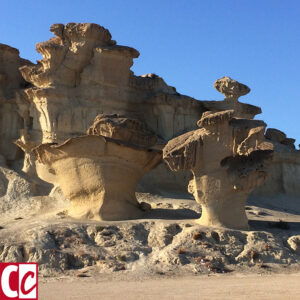
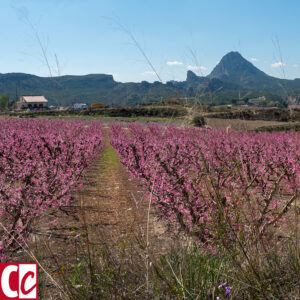

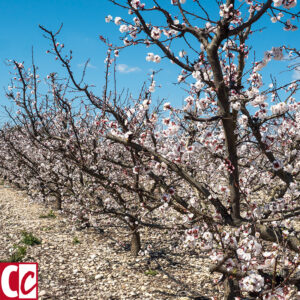

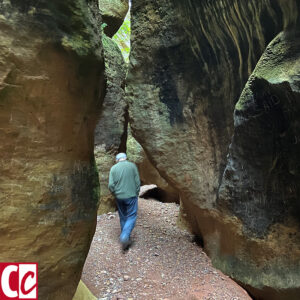
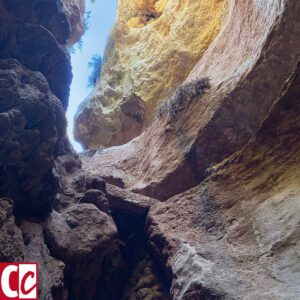

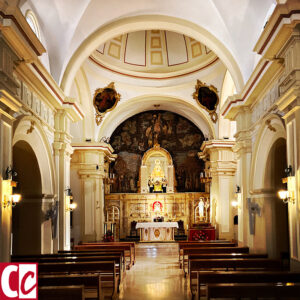


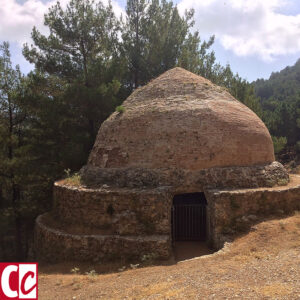
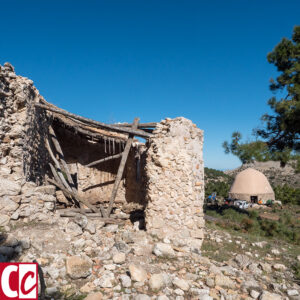

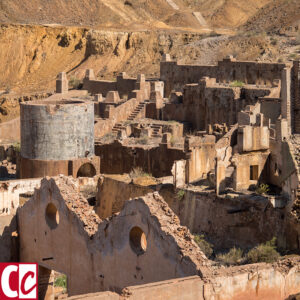
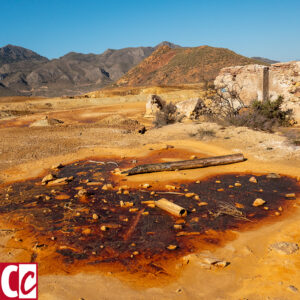
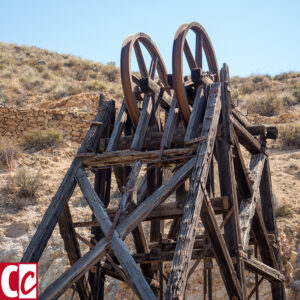


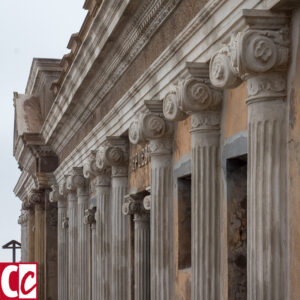
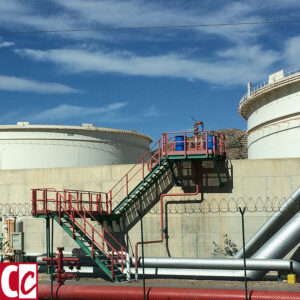



Hey, thanks for the great recommendations. I especially liked the cherry blossoms!
Oh, Hannie, I will do that; it would be great meeting you! 🙂
I didn’t know that about Spain, thinking what arrives here in the Netherlands is not organic, but maybe I am wrong. I don’t trust the long transportation way.
However, I am pleased to hear that the animals are treated well. 😉
Unfortunately, a lot of ecological products travel a long way, Sylvia. Yet, sometimes it’s better to have a product from South America that traveled by boat, than one from Europe that traveled by truck. There are parts of the logistical chain where we as consumers hardly can judge what the best part is.
I am looking forward to meet you 🙂
Hi Hannie, I wouldn’t say I like dry areas; I love green spaces, but I am interested in visiting many places, and even I hear you very well, I think I would love to see this place.
It sounds interesting to see all the historical sites and learn about the ancient people. I love history, but I love nature more, and when the fruit trees are blossoming, I would want to see it.
It is a pity that the Spaniards are using so much poison on their country. In the Netherlands and Germany, I never buy Spanish products. I have seen big barrels containing poison from Bayer company standing next to banana plantages in La Gomera. It certainly gives a horrible feeling to see that.
I hope that there will come many people who help improve the area by growing organic vegetables and fruits. But for sure I would love to see the place where you live! 🙂
Did you know that the Spanish quota of sustainable products is one of the biggest in Europe? I was surprised to hear that. Tom and I can’t benefit from that, because this quota is about meat production. And we don’t eat meat.
In Andalucia are fast pieces of land where animals can graze in freedom and where the meat is not ruined by hormones and medication. So in that regard, they are doing well.
But for plant-based products, I have to agree with you. Such a pity. Yes, the barrels with the skull and bones signs are horrible, as are the farmers who are wrapped in overalls including hoody, masks, and goggles.
But on the positive side: they are careful with the historical sites and there are plenty of them to be visited. So that’s nice.
And yes, do warn me if you’re in the neighborhood so we can grab a drink or lunch. 🙂
Hey, thanks for the great recommendations. I haven’t been to Murcia yet, but now when I saw some of the images and the places you mentioned, I’m interested in visiting them. I’m especially interested in visiting La Batería de Castillitos since I like those old castles etc.
I like it a lot that it’s not a too crowded area, I already live in a small town which is too crowded during the summer, swarming with tourists, and I hate it.
How much money would I need for a one-week holiday in Murcia? Do you suggest me sleeping at hotels or Airbnb? Looking forward to your answer, thanks!
LOL, Petar, we all want to be tourists ourselves and most of us are not very keen on all the other tourists. 😉 But I understand it. It’s a problem of most high-lighted spots; the tourists bring in the money but the problems and nuisance as well.
As for places to stay. Spain has very reasonably priced hotels, especially when comparing the prices with the North of Europe. I don’t have experience with Airbnb myself, but a friend of mine always books through them when he visits Spain and is very enthusiastic.
An ‘inside’ tip is to check out the hostals. They are considered to be a minor kind of hotel but we have found them often to be of great quality and they are way cheaper than the hotels. If you just need a place to sleep it’s a great choice. Usually, they don’t have eating facilities, nor ‘luxury’ like swimming pools or gyms.
Hi Hannie,
How interesting! I am Spanish, although I have never visited this region. I was living in Switzerland for a while and recently came back to Spain, but now I live in Catalonia, where I’m from. Now that we are here we can take the opportunity to visit some places that are not so far away.
I love landscapes, so one of the places I think I would like to visit is Cieza during the blossom season. I imagine it must be beautiful! The gorge in the Arboleja strait also seems to me an interesting place to visit, it must be impressive to be surrounded by such high rock walls. Even the effect of the sunlight between the stones and the color shading of the rocks.
What a pity that there are so many places where humans have caused so much environmental impact. This is one of the things that bothers me the most. I hope that future generations will become more environmentally conscious and act with more respect. After all, wherever it is, our planet is our home.
Thanks for sharing all this interesting information! The first hand information, from someone like you who knows the are, is very valuable.
Best regards,
Marta
Hi Marta, ohh, Catalonia is beautiful as well! Barcelona, Sitges, Tarragona; beautiful places.
The Estrecho de la Arboleja sure is nice, but if you are driving from Catalonia I would suggest visiting the Ciudad Encantada near Cuenca first. It’s closer by for you and a much bigger area. But you’re right, the one near me is great as well. For us especially, because we can be there in 15 minutes and have a lovely walk.
It’s an interesting assignment we can give ourselves: to travel and in the meantime reduce our ecological footprint. Both activities seem to be contradictory to each other, but it sure is possible. 🙂
Glad you liked the information. Do warn me if you are in the neighborhood!
Good afternoon, Hannie,
I enjoyed reading your post very much. I have not traveled for over 1 year and your post was like a mini trip.
I have passed through Murcia, but your description of it makes me want to visit. Spring is here and all these lovely blossoms and the smells make it the most loved season for me. I would definitely like to visit Cieza when the cherry blossom. As you say, a magnificent sight.
Your description of the Estrecho de la Arboleja reminds me of Alhama de Granada, which also has a tunnel-like access to the town.
I find the story about the Pozos de Hielo very interesting. These predate our freezer by a few years, really clever. A guided tour of La Bastida would certainly be on the program.
When we visited Cabo de Gata some years ago, we visited the mines. It looked very similar to the Minas de Mazarron. Those are exciting places to see as I am interested in stones. As a souvenir, I often come home with an unusual stone that goes into the stone tumbler. The result can be a big surprise.
Hopefully, 2021 will not be so restricted and then I certainly come for a visit.
Regards, Taetske
Hi Taetske, yes, we are all yearning to travel, aren’t we? For me, writing about the places I have visited acts as a replacement for the traveling I can’t do! 🙂
Ah, good to know that Cabo de Gata has mines to visit as well. It’s not that far away from where I live, so as soon as the provincial borders are open again, I can go visit it. Thanks for this tip as well as the one about Alhama de Granada. I would love to see that as well.
I am so glad my article has inspired you to come and have a look at Murcia. It would be marvelous if we can meet for a coffee or lunch then! 🙂
Hi Hannie,
thanks for sharing such an interesting text. I love to travel and discover new things so Murcia is a phenomenal discovery! I hear about this province for the first time and it looks tempting.
I really like Cieza, the village of the blossoms. It is really beautiful, like you are in heaven! Since I like to discover historical and archeological sites after Cieza I would visit La Bastida de Totana. The video you attached is spectacular!
As you mentioned, I like the idea of sustainable development through organic food production. It will come to life and gain importance in the future, so this area has a lot of tourists and any other potential.
I love Spain, its natural beauty, and the temperament of its inhabitants. My dream is to visit Barcelona, but when the circumstances allow, I will include Murcia in the places I have to visit. Greetings to you and keep writing such amazing articles!
Danijela
Thanks for the compliment, Danijela, I am always so happy when my articles find an appreciating audience. You’re located in Europe as well, I think? That way it’s not too complicated to visit Spain, so I am sure you will someday.
With you, I hope that both tourists and farmers will do their best to live a sustainable lifestyle. It is possible. It just needs a shift in thinking for most people. I can’t wait until that happens. 🙂